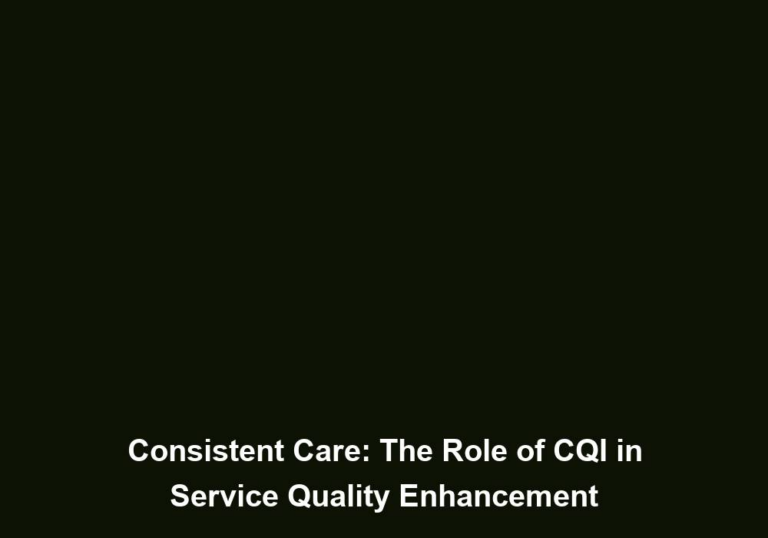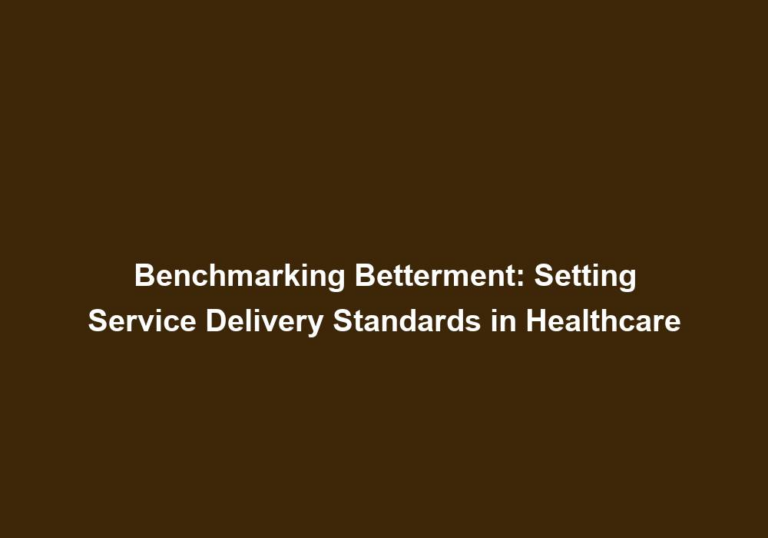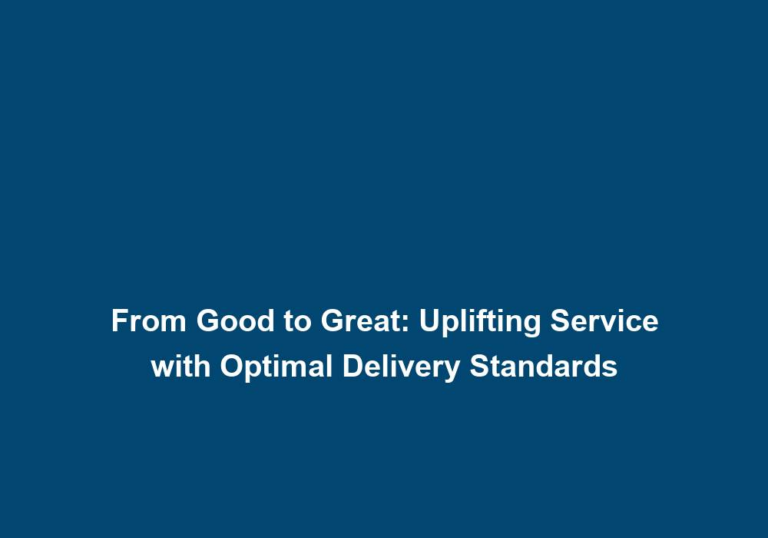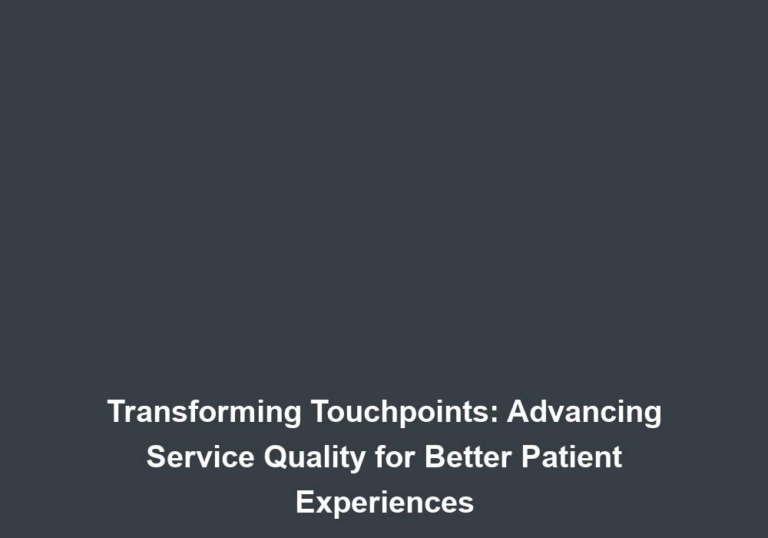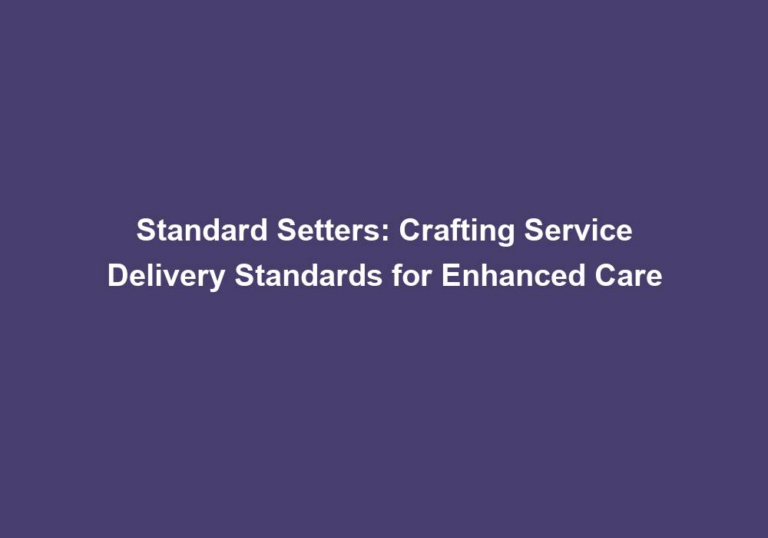Iterative Improvement: How CQI Shapes Superior Service Quality
In the ever-evolving world of business and customer service, organizations are constantly striving to provide superior service quality to gain a competitive edge. One highly effective approach that can transform service delivery is Continuous Quality Improvement (CQI). This iterative improvement process allows companies to identify areas for enhancement, implement changes, and consistently monitor and evaluate their performance. In this article, we will explore how CQI shapes superior service quality and the key benefits it offers.
What is Continuous Quality Improvement (CQI)?
Continuous Quality Improvement is a systematic approach that focuses on incrementally enhancing service quality over time. It is a cyclical process that involves four key stages: planning, doing, studying, and acting. Organizations employ CQI to drive positive changes, streamline operations, and deliver exceptional customer experiences.
Continuous Quality Improvement is a powerful methodology that enables organizations to continuously improve their service quality. By implementing CQI, companies can ensure that their processes, products, and services are constantly refined to meet the changing needs of customers and the dynamic market. It is an ongoing process that emphasizes evaluation and adjustment, rather than relying on one-time fixes. Through CQI, businesses can achieve sustained service excellence and stay ahead of the competition.
The Importance of Iterative Improvement
Iterative improvement is at the core of CQI, allowing organizations to continuously refine their processes, products, and services. Rather than relying on one-time fixes, CQI emphasizes ongoing evaluation and adjustment. This iterative approach enables businesses to adapt to changing customer needs and market dynamics, ensuring sustained service excellence.
By adopting an iterative approach to improvement, organizations can drive continuous growth and development. Iterative improvement allows companies to identify and address issues proactively, rather than waiting for problems to arise. This proactive approach helps organizations stay ahead of the curve and deliver superior service quality consistently.
Iterative improvement also fosters a culture of innovation and continuous learning within the organization. By encouraging employees to actively participate in the improvement process, organizations can tap into their diverse perspectives and expertise. This collaborative effort ensures comprehensive problem identification and generates innovative solutions that drive superior service quality.
Furthermore, iterative improvement enables organizations to respond quickly to changing customer expectations and market trends. By continuously evaluating and adjusting their processes, products, and services, companies can stay relevant and meet the evolving needs of their customers. This adaptability is crucial in today’s fast-paced business environment, where customer preferences and market dynamics can change rapidly.
Implementing CQI for Superior Service Quality
To leverage the benefits of CQI and shape superior service quality, organizations need to follow a structured approach. Here’s a step-by-step guide to implementing CQI effectively:
1. Establish a Clear Vision and Objectives
Begin by defining a clear vision of the desired service quality and outlining specific objectives. This provides a roadmap for your improvement efforts and helps align the entire organization towards a common goal.
A clear vision and well-defined objectives are essential for successful implementation of CQI. They provide a sense of direction and purpose, guiding the improvement initiatives of the organization. By clearly articulating the desired service quality, organizations can ensure that their improvement efforts are focused and aligned.
2. Identify Key Performance Indicators (KPIs)
Identify and measure KPIs that directly impact service quality. These could include metrics such as customer satisfaction scores, response times, first-call resolution rates, or net promoter scores. By tracking these indicators, you can assess your current performance and set benchmarks for improvement.
Key Performance Indicators (KPIs) are critical for monitoring the effectiveness of improvement initiatives. They provide a quantifiable measure of service quality and enable organizations to track their progress over time. By regularly measuring and analyzing KPIs, organizations can identify areas for improvement and make data-driven decisions.
3. Gather Customer Feedback
Engage with your customers to understand their expectations, preferences, and pain points. This can be done through surveys, feedback forms, social media listening, or direct interactions. By actively listening to your customers, you gain valuable insights that guide your improvement initiatives.
Customer feedback is invaluable in shaping service quality. By actively seeking feedback from customers, organizations can understand their needs and expectations in order to tailor their services accordingly. Customer feedback also provides insights into areas that require improvement, allowing organizations to prioritize their improvement efforts effectively.
4. Analyze Processes and Identify Areas for Improvement
Thoroughly analyze your existing processes, identifying bottlenecks, inefficiencies, and opportunities for enhancement. Take a holistic approach and involve employees at all levels to gain diverse perspectives and expertise. This collaborative effort ensures comprehensive problem identification and generates innovative solutions.
Process analysis is a crucial step in the CQI journey. By analyzing existing processes, organizations can identify areas that require improvement and uncover inefficiencies or bottlenecks. Involving employees at all levels in the analysis process fosters a culture of continuous improvement and ensures that diverse perspectives and expertise are considered.
5. Brainstorm and Implement Solutions
Based on the findings from the process analysis, brainstorm potential solutions and prioritize them based on impact and feasibility. Implement changes gradually, ensuring proper communication, training, and support for employees involved. Small, incremental improvements often yield better results than large-scale overhauls.
Brainstorming and implementing solutions are key steps in the CQI process. By involving employees in the brainstorming process, organizations can tap into their creativity and problem-solving skills. Implementing changes gradually allows for proper testing and ensures that employees receive the necessary support and training to adapt to the changes effectively.
6. Monitor, Measure, and Evaluate
Continuously monitor the impact of the implemented changes using the identified KPIs. Measure progress and evaluate the effectiveness of the solutions. Regularly review feedback from customers and employees to ensure the changes are achieving the desired outcomes.
Monitoring, measuring, and evaluating the impact of implemented changes are crucial for assessing the effectiveness of improvement initiatives. By regularly reviewing KPIs and gathering feedback, organizations can determine whether the implemented changes are delivering the desired results. This feedback loop allows for continuous learning and adjustment.
7. Act and Adjust
Based on the evaluation results, act upon the findings and make necessary adjustments. If the implemented changes are successful, consider scaling them up across the organization. If not, learn from the experience, make modifications, and try again. This iterative process of acting and adjusting is integral to achieving continuous improvement.
Acting and adjusting based on evaluation results is the essence of continuous improvement. Organizations must be willing to learn from both successes and failures, making necessary adjustments to improve their service quality continuously. By embracing this iterative process, organizations can achieve sustained growth and success.
Benefits of CQI on Service Quality
Implementing CQI practices can yield numerous benefits for organizations committed to delivering superior service quality. Some of the key advantages include:
-
Enhanced Customer Satisfaction: CQI helps organizations better understand their customers’ needs and expectations, enabling them to tailor their services accordingly. This leads to higher customer satisfaction levels and fosters long-term loyalty.
-
Increased Efficiency and Productivity: Continuous improvement initiatives streamline processes, eliminate waste, and enhance productivity. By identifying and addressing inefficiencies, organizations can optimize resource allocation and deliver services more efficiently.
-
Empowered Workforce: CQI empowers employees by involving them in the improvement process. It encourages collaboration, innovation, and problem-solving, leading to a more engaged and motivated workforce.
-
Competitive Advantage: Organizations that consistently improve their service quality gain a significant competitive edge. Superior service differentiates them from competitors and attracts new customers while retaining existing ones.
-
Business Growth: By delivering exceptional service quality, organizations can build a strong reputation and earn positive word-of-mouth referrals. This, in turn, drives business growth and profitability.
Conclusion
In today’s highly competitive business landscape, companies must continuously strive to enhance their service quality to remain relevant and successful. Implementing Continuous Quality Improvement practices enables organizations to identify areas for improvement, implement changes, and monitor performance in an iterative manner. By adopting a structured approach to CQI, businesses can shape superior service quality, delight their customers, and reap the rewards of sustained growth and success.


